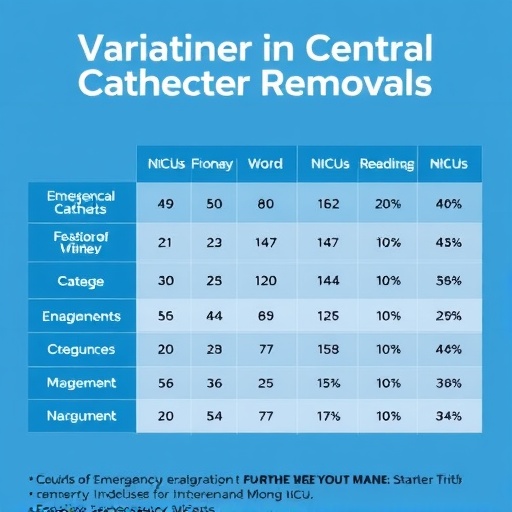Contemporary Issues in Health Policy: The Challenge of Discussing Structural Racism
In the evolving landscape of health policy, a profound and critical discussion has emerged concerning the implications of state and federal policies that attempt to limit the discourse surrounding “divisive concepts,” particularly structural racism. These policies, which have gained traction in various regions, pose a significant threat to the progress being made toward addressing health inequities and enhancing population health. A pivotal new Health Affairs Health Policy Brief sheds light on these issues, articulating the often-overlooked detriments of restricting such vital conversations.
Structural racism, a systemic facet that influences health outcomes, is rooted in our history and advocacy for social justice. By creating barriers to its discussion, these policies inadvertently perpetuate a narrow understanding of racism, one that emphasizes individual acts over systemic injustices. This limited perspective fails to reflect the intricate factors shaping health disparities in communities of color, thus hampering the development of comprehensive strategies aimed at promoting health equity.
Dr. Derek Griffith, a noted scholar in health equity and anti-racism, characterizes the suppression of discussions around structural racism as not only scientifically flawed but also detrimental to the very fabric of health policy practice. His assertions highlight that the struggles faced by marginalized populations cannot be adequately addressed without acknowledging the historical contexts and institutional frameworks that produce such disparities. Griffith’s insights remind us that knowledge and understanding are crucial allies in our pursuit of health equity.
As the article elaborates, the consequences of these restrictive policies are far-reaching. When discussions about structural racism become taboo, we risk sidelining powerful narratives that bring to light the multifaceted nature of health inequities. The advent of these prohibitions in educational and health discourse results in an oversimplification of complex issues, thus undermining the impact of vital community-based interventions designed to elevate population health. The call for a broader conversation on racism is not merely academic; it translates into tangible health outcomes for individuals and communities alike.
The collaborative effort between Griffith and Andrew Twinamatsiko, the director of the Center for Health Policy and the Law at Georgetown University, amplifies the urgency of this issue. Their research underscores the importance of understanding racism’s institutional dimensions and how these affect health outcomes across society. By framing their findings within the context of existing public health challenges, they provoke critical thought on how policy decisions reverberate through the fabric of healthcare access and delivery.
The authors assert fundamental measures that policymakers must adopt in response to these findings. Education is at the forefront; policymakers have an obligation to immerse themselves in the realities of structural racism, armed with facts that illuminate its impact on health. By fostering knowledge, there is hope for an informed dialogue that propels the movement towards health equity. Additionally, support for community-based initiatives that embody the principles of equity and inclusivity is necessary to rebalance the scales of health in underrepresented populations.
Proactive policy proposals must be drafted to create environments where discussions of “divisive concepts” can occur freely and responsibly. This requires legislators and leaders to advocate for laws that embrace complex narratives rather than shun them. Cross-sector collaboration and organizing across political divides become instrumental in advocating for health equity, proving that the collective voice remains a powerful force for change.
Griffith reiterates the necessity of this multi-faceted approach, urging a reevaluation of how we confront racism in our health systems. He emphasizes that ignorance surrounding structural factors leads to ineffective interventions. By fostering a deeper understanding of these issues, we can chart a path toward a future replete with opportunities for all individuals to attain optimal health.
Importantly, structural discussions around racism are not solely for academic discourse; they must inform practical application. As policies emerge that challenge traditional discussions, the onus is on advocates, educators, and practitioners to protect spaces where these conversations can take root. The role of public health leaders becomes critical in bridging these conversations with practical policy solutions, ultimately translating scholarly discussions into community benefits.
The interplay between academic research and real-world application reveals both the potential for transformation and the challenges that lie ahead. It beckons scholars, policymakers, and community leaders to engage in robust dialogues and collaborative initiatives aimed at dismantling the systemic inequities that persist in our society.
In summary, the prudent exploration of structural racism within health policy discussions is not simply an abstract debate; it is a necessary pursuit toward meaningful change. It provides an opportunity to reforge our understanding of health discrimination and lays the groundwork for interventions that promote equity. Raising awareness and fostering discussions that embrace the complexity of racism might be our most potent tool in achieving health equity for all.
Subject of Research: The implications of policies limiting discussions of structural racism on health equity.
Article Title: ‘Divisive Concepts’ Prohibitions: Implications For Health And Health Equity
News Publication Date: 16-Jan-2025
Web References: University of Pennsylvania School of Nursing, Health Affairs
References: Griffith, D. et al. (2025). ‘Divisive Concepts’ Prohibitions: Implications For Health And Health Equity.
Image Credits: Credit: Penn Nursing
Keywords: Health policy, structural racism, health equity, population health, public health discourse.





